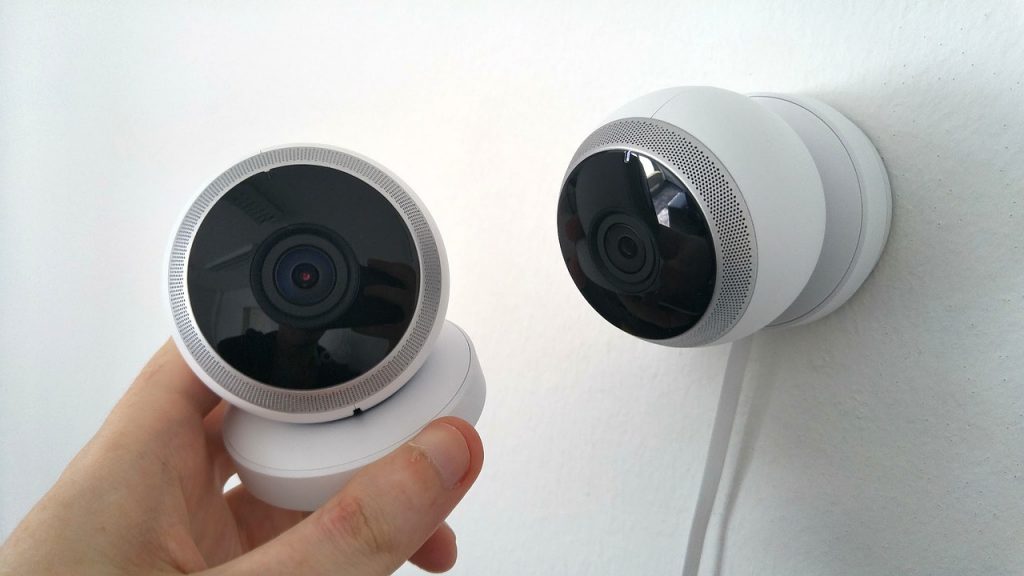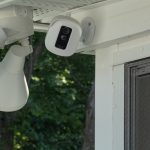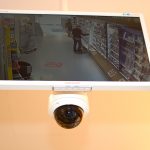Table of Contents
- Introduction to Wireless Home Security Cameras for Cellular Connection
- Setting Up
- Pros and Cons
- Features to Consider
- Top Picks
- Conclusion
- Frequently Asked Questions
Introduction to Wireless Home Security Cameras for Cellular Connection
Are you in the market for a wireless home security camera that uses a cellular connection instead of Wi-Fi?
Wireless home security cameras for cellular connection are the perfect option for people who are looking to keep their homes secure. These cameras use a cellular connection instead of Wi-Fi, which makes them more reliable and less vulnerable to hacking or signal interference.
Plus, since they don’t require an internet connection or router, you can place them anywhere such as in the farm, construction sites, warehouses, or any commercial and residential area where they can best monitor their security.
These cameras come with a variety of features that allow you to watch your home in real time. Most are equipped with motion sensors, night vision, two-way audio, and even facial recognition technology so that you know who is coming and going into your home. Many also come with cloud storage, so that you can access footage from anywhere in the world.
In this blog post, we’ll take a look at some of the best wireless home security cameras that use a cellular connection. So, whether you’re looking for an affordable option or something that offers more features, we’ve got you covered.
Setting Up
Setting up a cellular connection wireless home security camera is a relatively simple process.
First, you’ll need to determine the best location for your camera. It’s important to consider factors such as the camera’s field of view, the distance from any potential power sources, and the distance from your router. Once you’ve chosen a spot, you can mount the camera using the provided mounting hardware.
Next, you’ll need to connect the camera to your home’s Wi-Fi network. This is typically done through a mobile app that you’ll need to download to your smartphone. Follow the app’s instructions to connect the camera to your Wi-Fi network.
After the camera is connected to your Wi-Fi network, it’s time to set up the cellular connection. This will allow you to access the camera’s live feed and receive notifications even when your Wi-Fi is down or unavailable.
To do this, you’ll need to purchase a cellular data plan from a service provider and insert a SIM card into the camera. Once the SIM card is in place, you’ll need to activate it through the service provider’s website or by calling their customer service line.
Finally, you can customize your camera’s settings to your liking. This might include adjusting the motion detection sensitivity, setting up custom alerts, and choosing how you want to be notified (e.g. via push notification, email, or text).
With these final steps completed, your cellular connection wireless home security camera is ready to use.
Pros and Cons
Cellular connection wireless home security cameras offer a number of benefits that make them a popular choice among homeowners.
One of the main advantages of cellular security cameras is their reliability. Because they use a cellular data connection rather than Wi-Fi, they are less likely to lose their connection or suffer from interference. This means you can rely on your camera to stay connected and provide a clear and stable feed, even in the event of a power outage or internet disruption.

Another advantage of cellular security cameras is their portability. Since they don’t require a physical connection to your home’s Wi-Fi network, you can easily take them with you when you travel or move to a new home. This makes them a great option for people who are frequently on the go or who live in rental properties.
However, cellular connection security cameras also have some drawbacks to consider.
One potential downside is the cost. In addition to the upfront cost of the camera itself, you’ll also need to pay for a monthly cellular data plan in order to use the camera. This can add up over time and may not be practical for everyone.
Another potential issue with cellular security cameras is their battery life. Because they rely on a cellular connection, they will use more power than cameras that only connect to Wi-Fi. This can lead to shorter battery life and the need for more frequent charging or battery replacements.
Overall, cellular connection security cameras offer a reliable and convenient way to monitor your home. While there are some costs and potential issues to consider, for many people the benefits outweigh the drawbacks.
Features to Consider
When shopping for a cellular connection wireless home security camera, there are several features you’ll want to consider.
First, you should look for a camera with a wide-angle lens so that you can see as much of the area as possible. You’ll also want to make sure the camera has night vision, which is essential for keeping an eye on your home when it’s dark outside.
In addition, look for cameras with motion detection and two-way audio so you can speak directly to whoever is in the camera’s view. Finally, you should also look for cameras that offer cloud storage as well as local storage. This will ensure that your recordings are safe and secure even if the camera is stolen or destroyed.
Top Picks
Now that you know what features to look for in a cellular connection wireless home security camera, let’s take a look at some of the best options available.
The Arlo Go is a versatile and reliable camera that works with a cellular connection. It features a long-lasting battery life and offers sharp HD video quality. The app allows you to customize motion detection, so you can be sure of getting the notification whenever something is going on inside or outside your home.
Another option is the Reolink Go powered by a rechargeable battery and supports a 4G-LTE cellular connection. It offers an impressive field of view and an easy installation process. The two-way audio feature allows you to talk to anyone in the vicinity of the camera, while night vision lets you keep an eye on your home at all times.
Lastly, the V200 camera is designed for outdoor use and offers a wide field of view. It supports both Wi-Fi and 4G LTE cellular connection, making it an ideal choice for homeowners who don’t have access to reliable Wi-Fi networks.
Ultimately, a cellular connection wireless home security camera is an excellent choice for those who want reliable coverage and the freedom to place their cameras in any location. However, it’s important to consider the cost, signal strength, and any special requirements before making a purchase.
Conclusion
Cellular connection wireless home security cameras offer a convenient and reliable option for protecting your home. With their ability to be easily set up and taken with you wherever you go, they offer flexibility and peace of mind.
When shopping for a cellular security camera, be sure to consider the features that are most important to you, such as resolution, night vision, and cloud storage options. Our top picks for cellular connection wireless home security cameras include the Arlo Go, the Reolink Go, and the V200 camera, all of which offer a range of features and reliable performance.
Frequently Asked Questions
The Arlo Go, Reolink Go, and V200 are some of the best options for cellular home security cameras. These cameras use either 3G or 4G LTE cellular connections to stream live video and audio directly to your smartphone.
A cellular connection offers many benefits when used with home security cameras because it is a secure and reliable way to stream video. With a cellular connection, there are no wires or cables that need to be installed and the camera can be placed in any location with cellular coverage.
When choosing the best wireless home security camera for your needs, consider factors such as coverage area, video quality, and battery life. Also, you should look at the type of cellular connection available (3G or 4G LTE) as this will determine the quality of streaming and other features available.
Depending on your security needs, you may also want to consider features such as motion detection, night vision, and two-way audio.
When using a wireless home security camera, it is important to configure the settings properly before installation. You also need to make sure that the camera is placed in an area with strong cellular coverage and check frequently for any updates or security patches.
If you are having trouble with your wireless home security camera, the first step is to check if the device is properly connected to a network. If not, try resetting or reconnecting it.
You should also check for any software updates and make sure that the cellular connection is strong enough for streaming video.
The most common problems people experience with wireless home security cameras are connection issues, power outages, and poor video quality. To avoid these problems, always make sure that the camera is properly connected to a network and has strong cellular coverage before installation.







